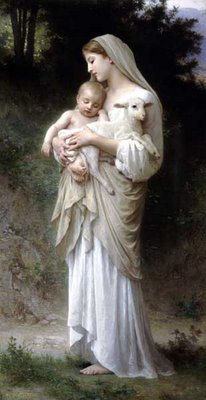Pictures For Halloween

The Truths About Halloween
To most people, Halloween is a fun holiday to dress up and eat candy. Well, even Pagans like to eat candy on Halloween, but we consider it to be a very important holiday in a more spiritual sense as well.
The proper name for the occassion is Samhain (pronounced Sow-en or Sow-een). It's sometimes referred to as the Witches New Year, because our religious year starts/ends with Samhain. The holiday began being called "Halloween" because the Catholic church created All Saints Day (or All Hallows Day) on November 1st, in an attempt to turn people away from the original Pagan holiday. The night before became known as "All Hallows Eve", which then got shortened up to Halloween.
If you are concerned about the Pagan nature of October 31st, then you should probably stop celebrating Christmas and Easter, too.
Though those holidays have been thoroughly adopted by the Christian religion, they were both originally Pagan celebrations (Yule and Ostara). Halloween is the only holiday that has kept most of its Pagan meanings, without the Christian overtones.
Many fundamentalist Christian groups stand against the celebration of Halloween because they feel it is associated with demons and Satan. Unfortunately, most (if not all) of their 'facts' are incorrect.

The most common error, is that Halloween is celebrated to honour the Celtic God of the Dead, Samhain. The Celts had no such God. The word "Samhain" more likely came from "samhuinn", which is the Gaelic word for "summer's end". A fitting name, since that is precisely what this holiday is celebrating.
There is nothing Satanic about Halloween, either in modern times, or in the early history of the festival. Of course, there is nothing Satanic about any aspects of Wicca, witchcraft or Paganism, but that's another story altogether. We don't celebrate black masses, conduct sacrifices or cast hexes on Halloween (or any other day!)
So now you know what Halloween isn't, but what does Halloween mean? Well, to Pagans who celebrate Samhain, it is the third and last of the year's harvest festivals. The crops are in, and it's time to relax and prepare for the long winter ahead. Samhain is a time to reflect on the events of the past year, and to remember those who have passed away. It's at this time of the year that spirits travel from this world to the next. Both good and evil spirits.
Part of the mythology of the holiday is that the God dies at Samhain, and the Goddess mourns Him until His rebirth at Yule. It is Her mourning that brings about the shorter, cold days of winter. After His birth at Yule, the days begin to get longer again.

Many of the symbols and traditions that we see around Halloween today can be traced to earlier times. Carving of jack-o-lanterns probably started with turnips rather than pumpkins, but the idea is the same either way. With the spirits of the dead travelling on this day, people would carve faces into turnips (or gourds or whatever) in order to scare away any evil spirits. The dressing up in costumes was also done to scare off bad spirits.
The idea of playing tricks was not done maliciously, but just as a way of having a bit of fun before the long dark winter settled in. The original gathering of treats was done to provide offerings to the Gods, in thanks for the harvest.
Personally, I leave a candle lit in the window along with a food offering for the spirits that might pass my way.
One last word. Many fundamentalist Christian groups have a strong negative bias towards any religion that is different from their own. Please keep this in mind when reading their websites for more 'truth' about Halloween.














0 Comments:
Post a Comment
<< Home